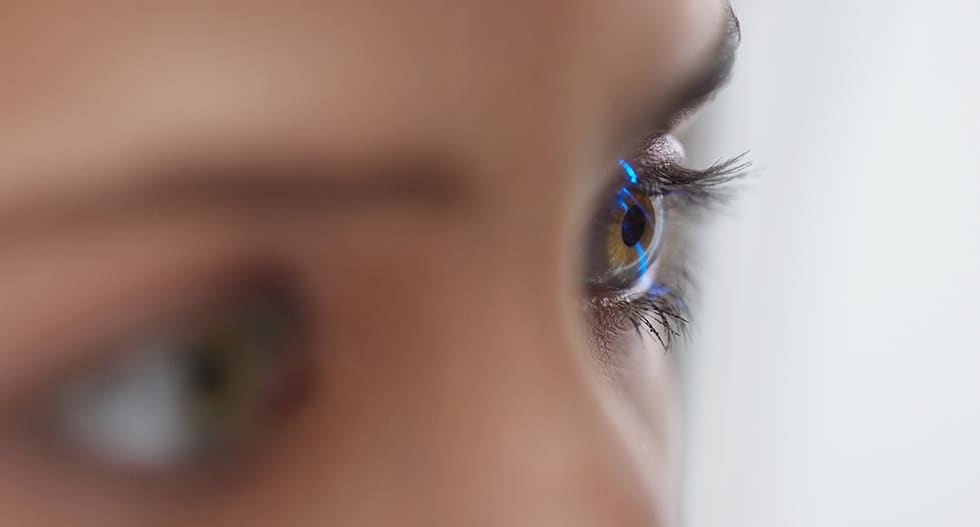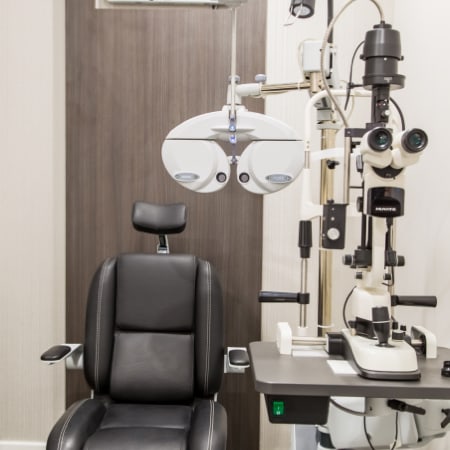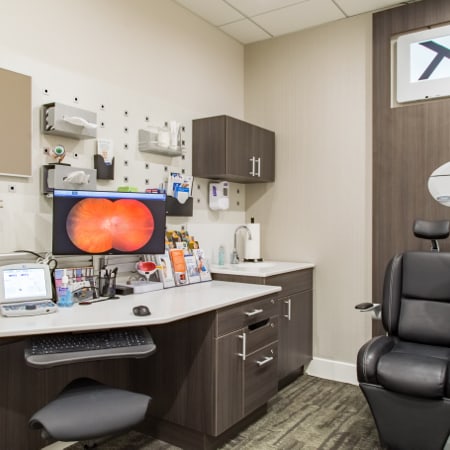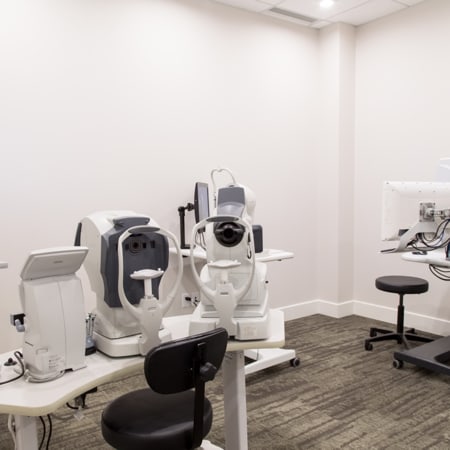The Importance of Diabetic Eye Exams
In Canada, there is currently about 10% of the population living with diabetes. Diabetes refers to the body’s resistance to making its own insulin and can affect the body in more ways than you might think.
In fact, the health of your eyes can be directly linked to diabetes, which is why a diabetic eye exam is essential for those experiencing the disease.
Diabetes can lead to diabetic eye conditions or diseases, but through a comprehensive exam, we can identify and treat these conditions before they progress.

What to Expect During a Diabetic Eye Exam
A diabetic eye exam is similar to a traditional eye exam but oftentimes will include a pupil dilation. The pupil is dilated to get a clear view of the back of the eye where the retina is. These dilation drops can cause a slight blur in vision and light sensitivity.
It is recommended that patients with diabetes attend an eye exam annually due to risk of developing diabetic eye diseases.


Diabetic Eye Disease
For our patients with diabetes, we know they can be at an increased risk for diabetic eye diseases such as diabetic retinopathy and diabetic macular edema. Staying on track with your annual diabetic eye exam can help diagnose these diseases before they progress and cause vision loss.
When the sugar in the blood gets too high, it can cause damage to the retina. This is the case with diabetic retinopathy, where the blood vessels at the back of the eye become blocked, and fluid can begin to leak.
Symptoms don’t always show in the early stages, but later-stage diabetic retinopathy can cause blurry vision, spots in your vision, and total vision loss in severe cases.
Diabetic macular edema occurs due to a buildup of intraretinal fluid due to diabetic retinopathy. The buildup of fluid causes swelling in the macula of the retina and leads to macular edema.
Diabetic macular edema can also cause blurry vision and vision loss.
Our Diagnostic Technology
In order to get a clear picture of your eye during our diabetic eye exams, we use our modern technology and tools.
Colour fundus retinal photography is an imaging system that takes pictures of the inside of the eye to monitor for any abnormalities or changes.
The fundus camera works like a tiny microscope to get a full view of all of the parts of the inside of the eye, including the retina and macula.
Optical coherence tomography (OCT) is an imaging system that takes cross-sectional images of the retina to view different layers and retinal thickness. OCT uses light rays to take these images and provides an enhanced view of the retina.

Providing Diabetic Eye Care
Caring for the health of your eyes is an important part of your diabetic health care.
Stay on track with your eye exams to help limit the risk of damage from diabetic eye diseases and give you the peace of mind that your ocular health is in check.














